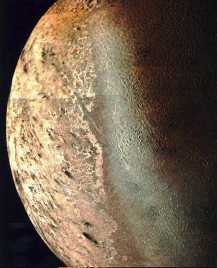This is an image of Triton.
Click on image for full size
NASA
Triton
Triton was discovered by W. Lassell in 1846. Of the 8 moons, it is the 2nd farthest from Neptune, with a standoff distance of 354,800 km.
Triton may be one of the largest of the icy moons, is comparable to Europa, with a diameter of 2700 km (1800 miles). 1800 miles is about half the distance across the United States.
Triton is very interesting, it has a unique and fascinating surface, and is one of the few moons with the possibility for a weak atmosphere and an environment suitable for life. Triton is also unusual for its retrograde orbit. Because Voyager 2 did not pass very close to Triton, it was not determined whether Triton is composed completely of ice, or is a rocky moon with an icy surface.
You might also be interested in:
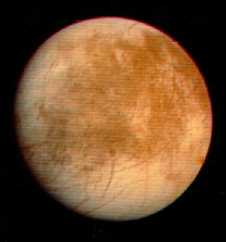
Icy moons are large or small moons which are composed mostly of ice. These moons are unlike the earth's moon, which is made of silicate rock. Perfect examples of icy moons are 3 of the Galilean satellites,
...more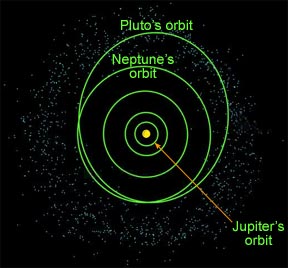
Thousands of frozen worlds hover at the edge of our Solar System. These frigid balls of ice and rock, similar in location and size to the planet Pluto, orbit the Sun in a distant region called the Kuiper
...more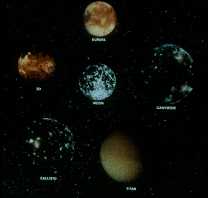
This is an image of the Earth's moon, shown in the center, with several other moons for comparison. The image shows that the Earth's moon is a lot smaller than Ganymede, Callisto, and Titan. The Earth's
...more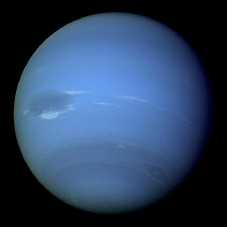
If you had a quiz question in school that asked what year Neptune was discovered, you'd probably choose 1846. But Neptune wasn't discovered the way all the other planets in our solar system were. Astronomers
...more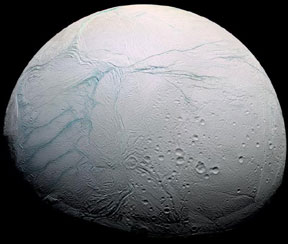
Enceladus is the sixth largest moon of Saturn. It was discovered in 1789 by the British astronomer William Herschel (who also discovered the planet Uranus). Enceladus is a medium-sized moon made primarily
...more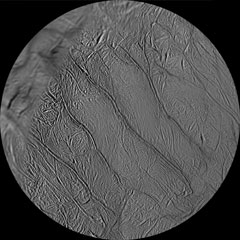
Enceladus is a medium-sized, icy moon of Saturn. The South Pole of Enceladus is one of the oddest places in the Solar System. Temperatures near the pole are far warmer than anywhere else on the moon, huge
...more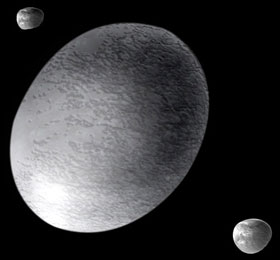
As of June 2009 there are officially five dwarf planets: Pluto, Ceres, Eris, Haumea and Makemake. At least four of them are icy objects reminiscent of the cold polar regions on Earth. Although our knowledge
...more
Nereid was discovered by G. Kuiper in 1949. Of the 8 moons it is the farthest from Neptune, with a standoff distance of 5,513,400 km. Nereid is one of the small moons, and is about as long as the distance
...more


